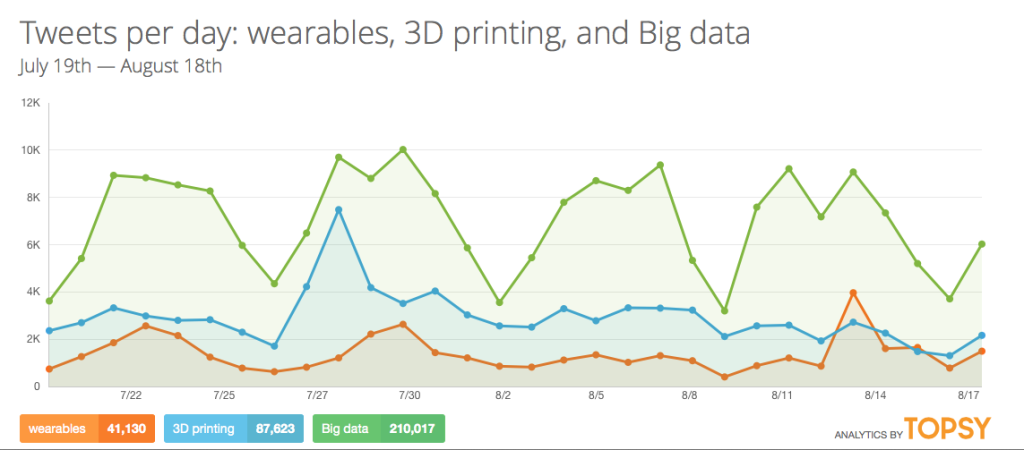Recent analysis by ResearchMoz predicts that “the global Wearable Technology Market…is expected to reach USD$5.8 billion in 2018.” A new market research report “Wearable Electronics Market and Technology Analysis (2013 – 2018)” published by MarketsandMarkets projects that the global wearable electronics market revenue is expected to cross $8 billion, and the total unit shipment is expected to cross 130 million units globally, by 2018. Wearable technology designers are increasingly looking to 3D printing to complement their research and development process.
Wearables – also known as fashionable technology, wearable devices, tech togs, fashion electronics and more – are trending. If in doubt, check out the leading tech magazines which have established special sections for the nascent category. The term is also being dropped into presentations by the tech industry around the world and there is little doubt that wearable technologies are going to make an impact on the market, and upon our lifestyles. This is because they come with a promise of increased convenience and functionality on the go, whilst also ticking the box for looking good (although this can be debated — at length).
3D printing is also becoming intertwined with wearables. To lesser or greater extents there is already crossover, given that the ability of a designer to show a client a tangible prototype is especially valuable for wearables: the weight, texture and feel of the product are keys to unlocking its success. That which is to be worn more often than not benefits from being produced in a manner that is as personalisable and customisable as possible. People range in taste as much as they do in body shape. Just as – apparently – traditional Made-To-Order may have made its return, the potential for personalisation via digital production is arguably just around the corner.
”The proliferation of online made-to-order apparel suggests that buyers are hungry for customized garments. While buying these goods online isn’t likely to disrupt the retail industry, it is clear that retail apparel companies are busy creating new and innovative ways to reach beyond the traditional brick and mortar experience.”– D. Jacobs, Forbes
Recently, zero360, a UK-based service bureau, worked with Industrial Plastic Fabrications Ltd (IPF – you can find their plastics 3D printing gallery here) to prototype a wristband that is enabled with the capacity to sense and process the biosigns of the wearer, such as heart rate. The prototype was 3D printed using a Stratasys Objet500 Connex3 Color Multi-material 3D Printer. Choosing such an advanced printer allowed the designers to choose from ten colour palettes that can each produce fourty-six different colours. Gary Miller of IPF says that it took only a few hours to 3D print zero360 wristbands using the Objet500 Connex3.
Alongside the saving in time, 3D printing the prototype also proved to be highly cost effective: Luke Guttery, Director of Product Design at zero360, estimated that the cost of creating the prototype using 3D printing is 85% less than conventional casting methods. Mr. Guttery said: “Comfort is a really important factor in sustained engagement, so being able to rapid prototype these is a key part of the development process. Also, the Objet Connex’ flexible material is very durable and is as good as casting, which is a massive plus, as it’s quicker to produce.”
The proof is in the pudding as they say where I come from. Not the most eloquent of phrases I admit, but the predictions are hot and the emerging picture may be yet another area that 3D printing affects – as Stratasys says: “With the fashion and technology industries overlapping in the field of wearable tech, we expect to see more companies using 3D printing to give their clients a true sense of the finished product.”


Leave A Comment